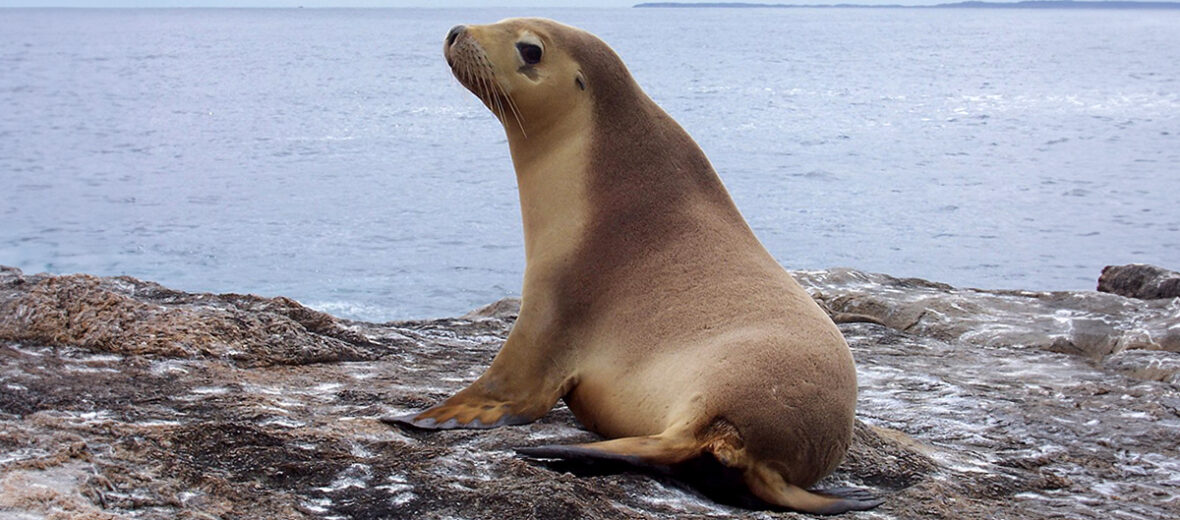
The Australian sea lion, aka Australian sealion, Australian sea-lion, or white-capped sea lion, hails from Western and Southern Australia. They prefer sandy beaches, beaches with cliffs, and isolated bays. Sadly, these critters face many threats such as habitat loss and destruction at the hands of commercial development, tourism, and aquacultural practices; shipping lanes, that also result in boat strike – being hit by boats and/or props; overfishing; recreational activities, which result in humans encroaching on their breeding grounds; pollution, that affects the water and also subjects them to ingestion of microplastics; and climate change. The IUCN lists these sea lions as Endangered.
First the Stats…
Scientific name: Neophoca cinerea
Weight: Up to 660 lbs.
Length: Up to 8.2 feet
Lifespan: Up to 16 years
Now on to the Facts!
1.) There were only an estimated 6,500 wild individuals remaining as of 2014.
2.) These critters are the only endemic pinniped found in Australia.
3.) Australian sea lions are diurnal (active during the day).
4.) They are very social and gather into large colonies. However, they mostly get together into smaller groups of up to 15 individuals.
5.) The Australian sea lion can dive to depths of up to 600 feet.
But wait, there’s more on the Australian sea lion!
6.) While under water, they can hold their breath for up to 40 minutes!
7.) Small stones are sometimes ingested. It is presumed that this aids in counter buoyancy.
Did you know…?
Being excellent climbers, these critters can sometimes be seen on cliffs as high as 98+ feet!
8.) Octopuses, squids, wrasses, fairy penguins, cuttlefish, whiting, small sharks, and rays are all on the menu.
9.) Like all sea lions, they are polygynous (1 male mates with multiple females).
10.) Females undergo up to an 11 month gestation (pregnancy) that yields a single pup.
But wait, there’s still more on the Australian sea lion!
11.) Pups are weaned in up to 18 months.
12.) The pups gather into small rock pools, which act as a kind of nursery, where they play, develop, and participate in mock battles.
Did you know…?
A 1 year old pup is called “yearling” whereas a group of sea lions, while in water, is called a “raft”.
13.) Sea lions are intelligent enough to learn tricks and have even aided the United States military in various tasks.
14.) Whenever you see a sea lion raising 1 flipper out of the water, this is done to cool themselves off. The wet flipper is cooled by the breeze and the cooled blood is transferred throughout the body.
15.) They utilize their whiskers to sense vibrations and movement in the water of prey and/or predator.
16.) Large sharks and orcas prey on these sea lions.
Now a Short Australian Sea Lion Video!
Be sure to share & comment below! Also, check out the Critter Science YouTube channel. Videos added regularly!
Want to suggest a critter for me to write about? Let me know here.
Some source material acquired from: Wikipedia & IUCN
Photo credit: Bmh ca



